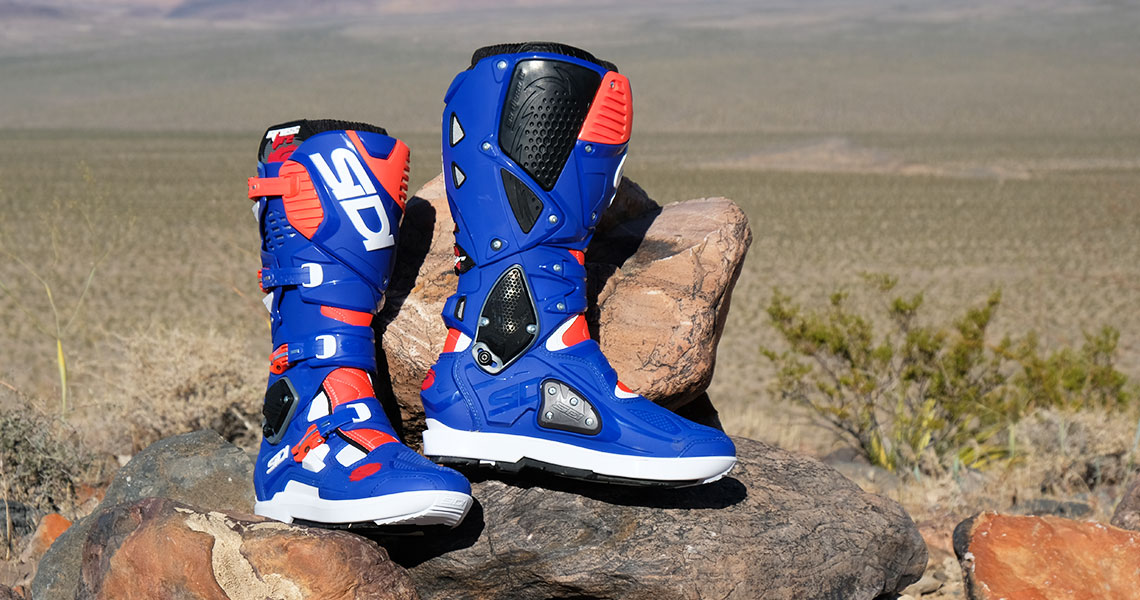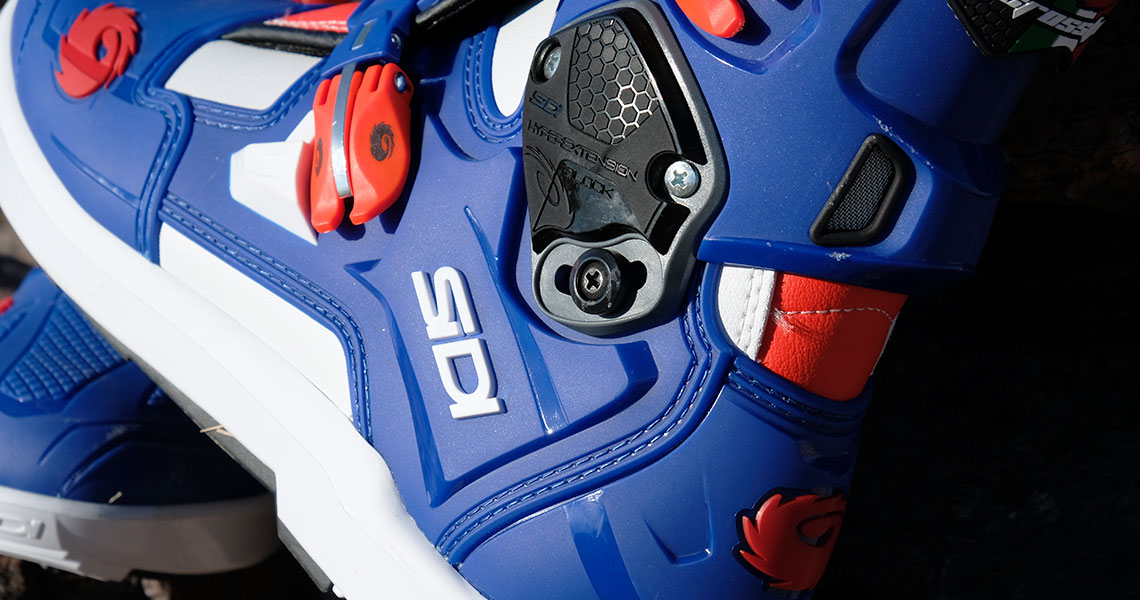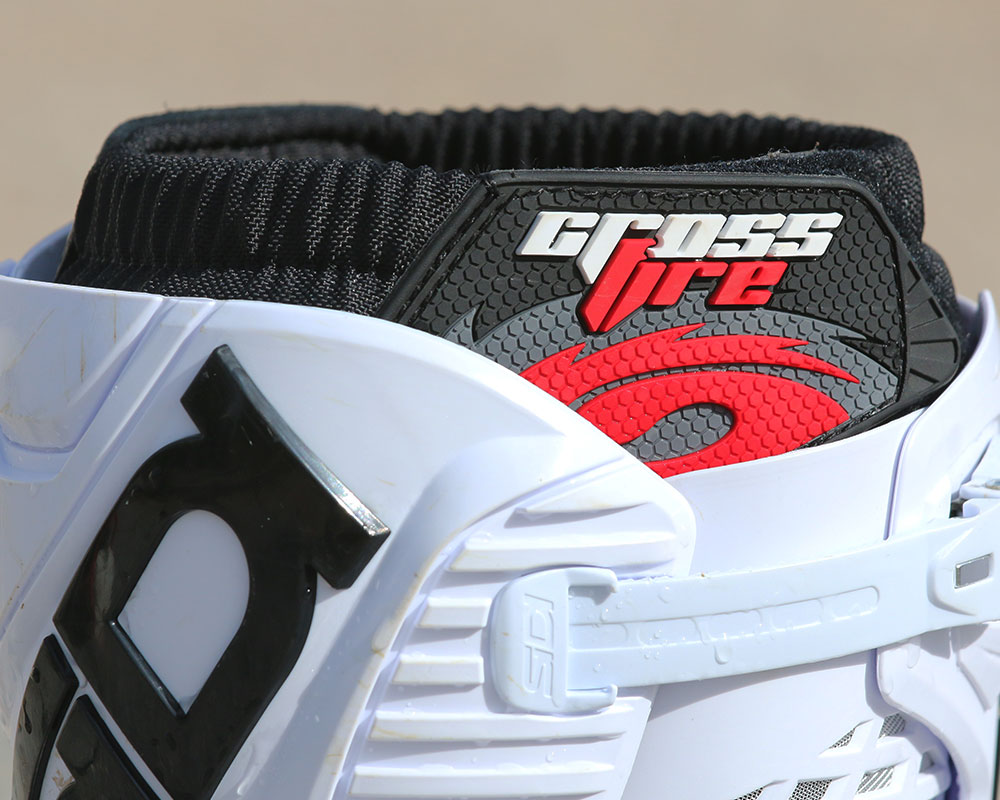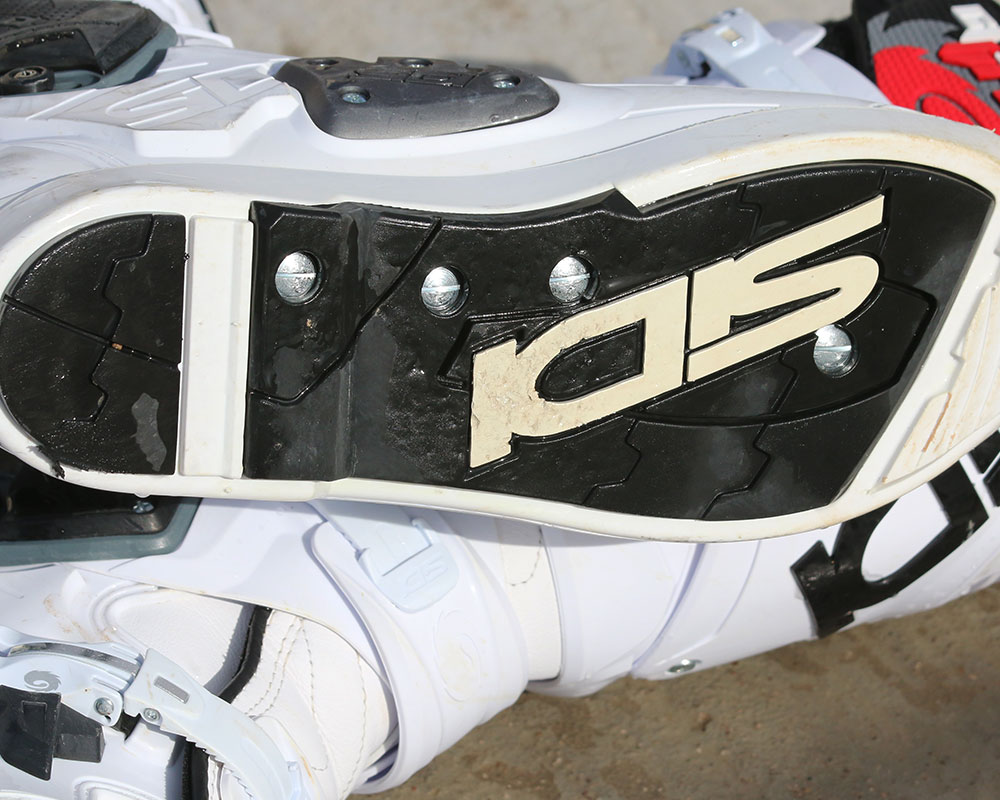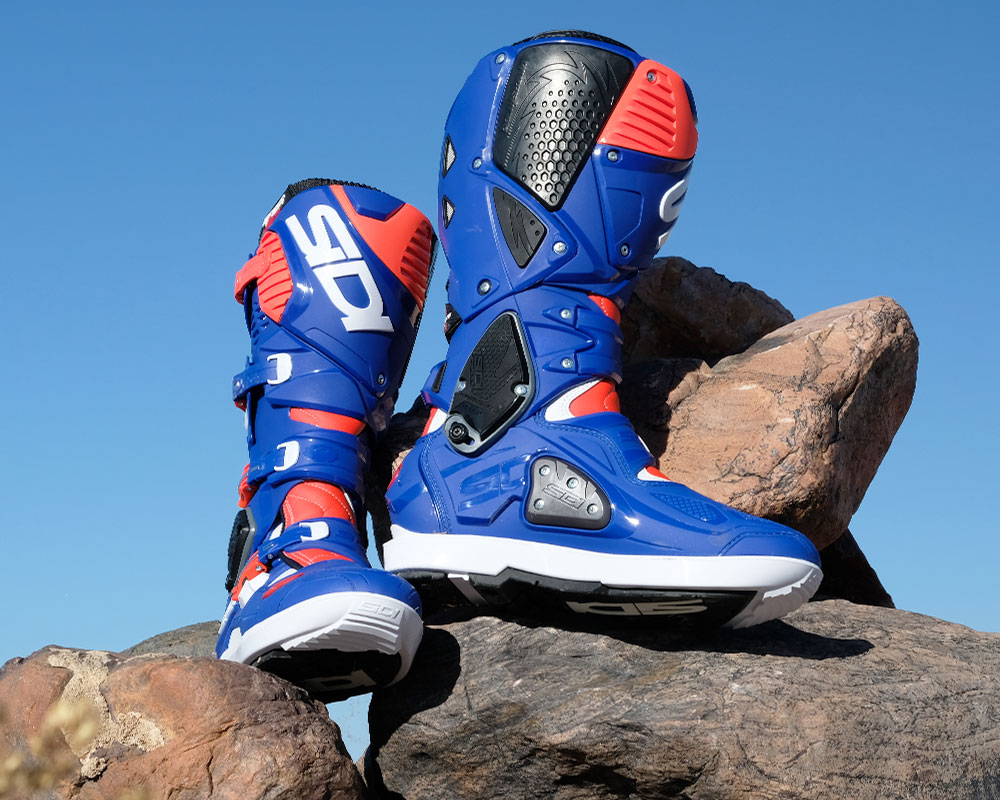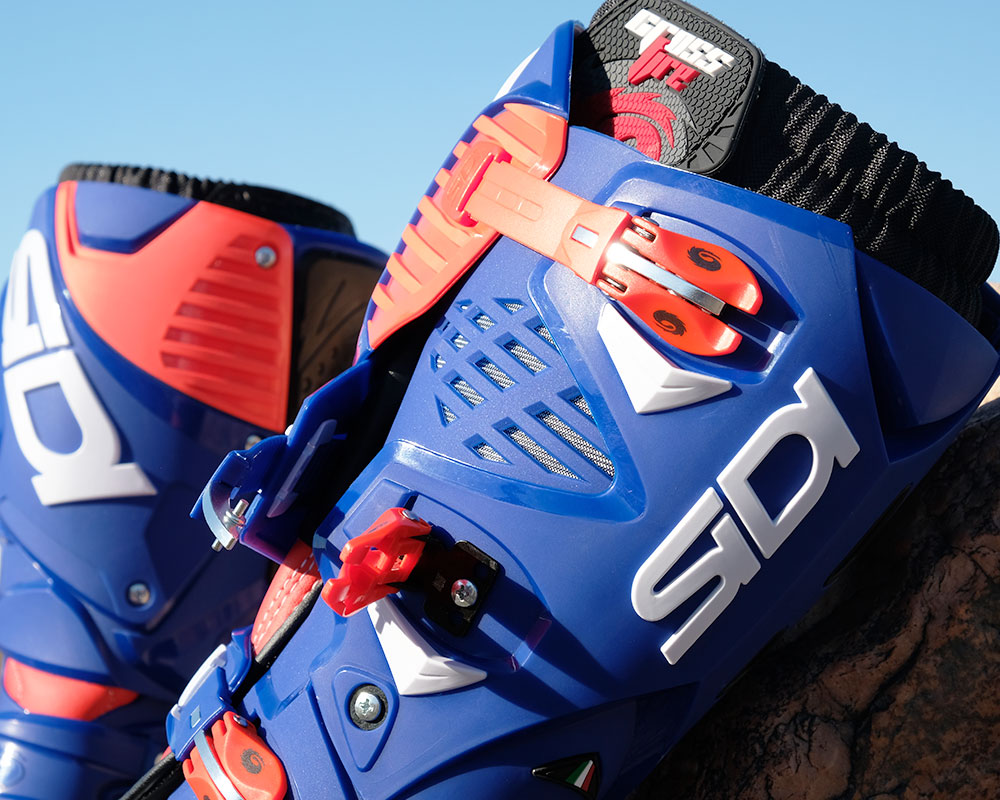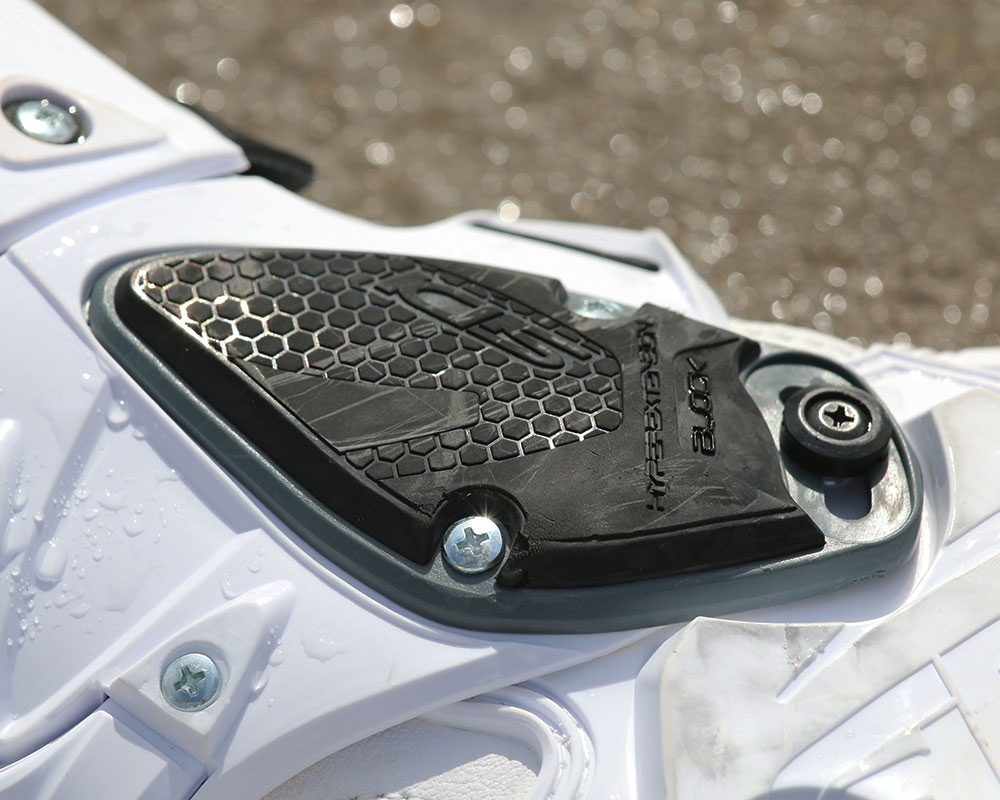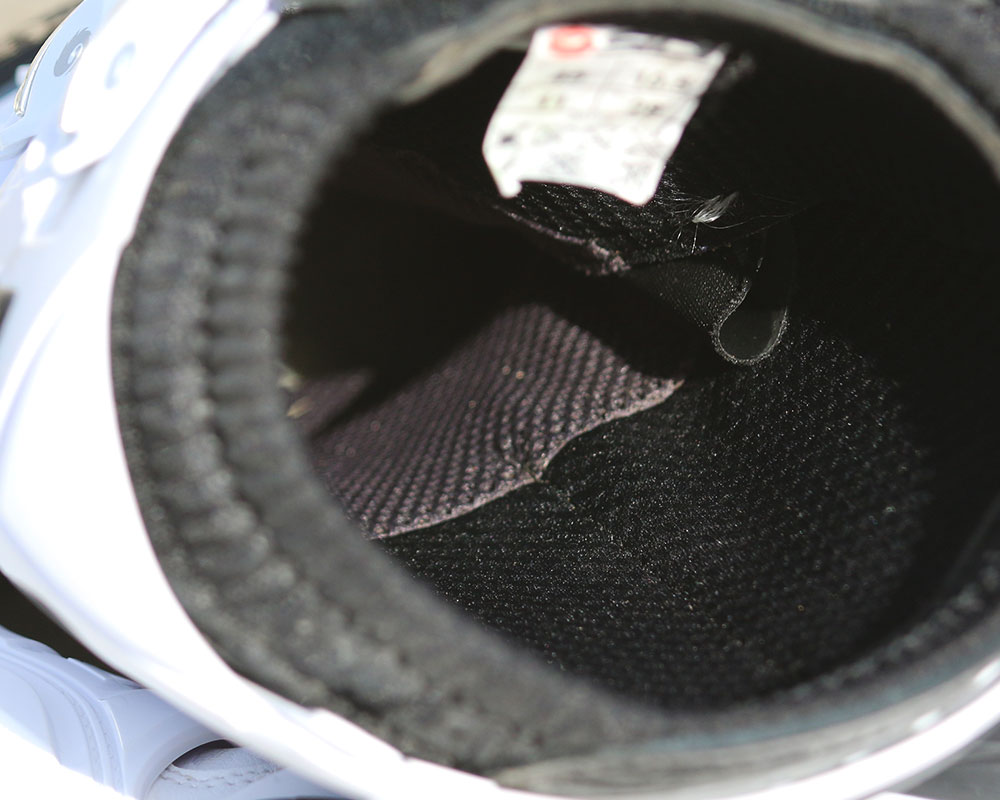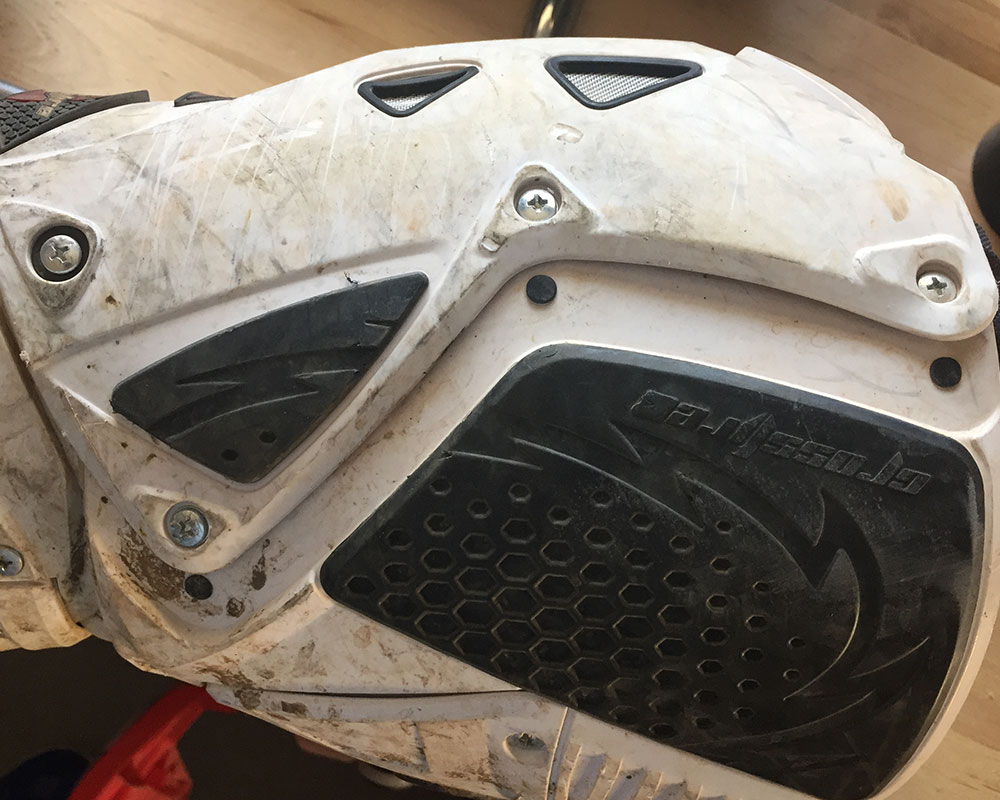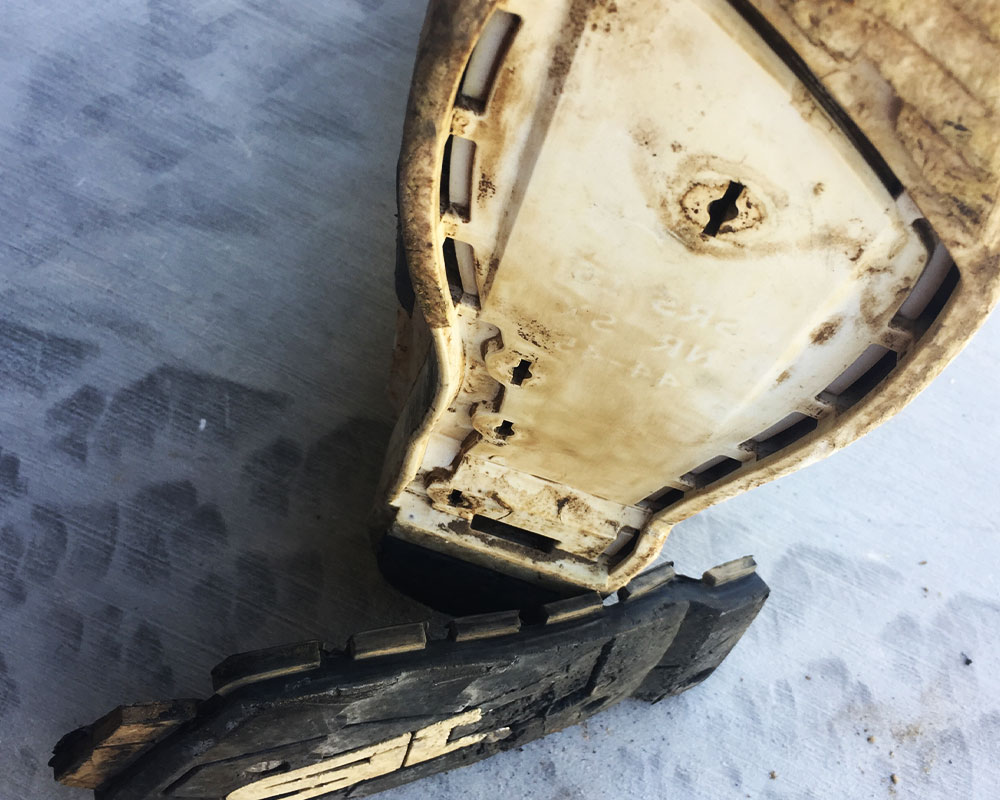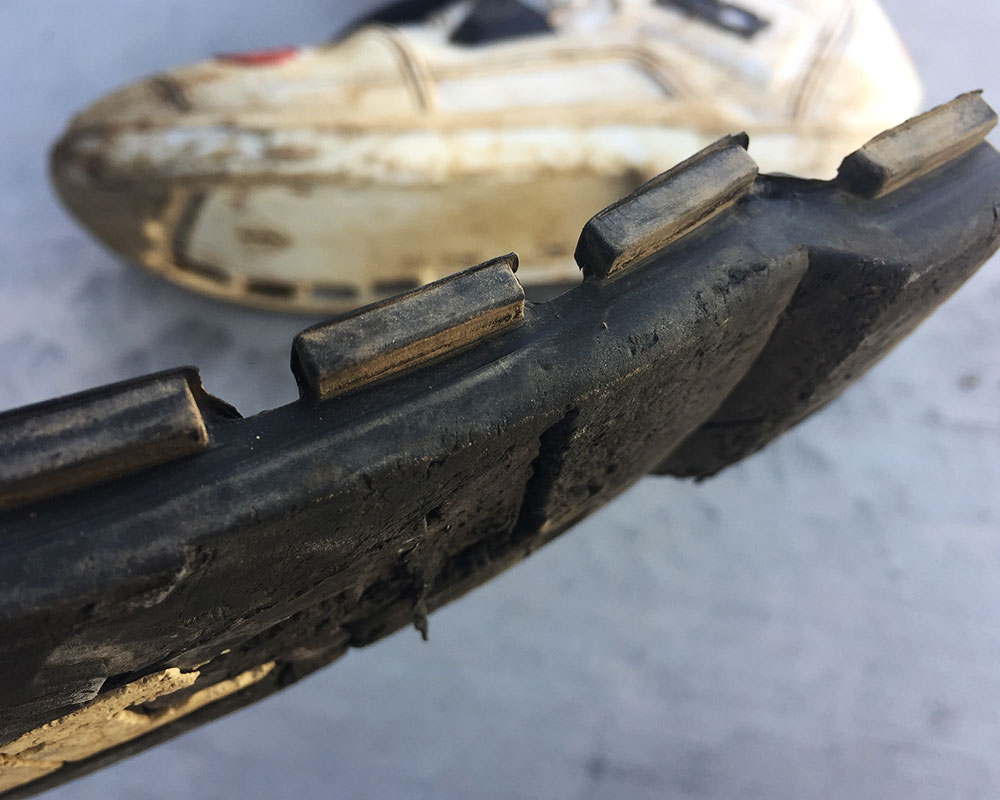Sidi Crossfire SRS 3
Company: Sidi
Price: $595.00
- Serious protection in motocross and off-road footwear.
- Super durable with replaceable wear parts (that hardly wear out).
- Lots of color options.
- Wide feet might not fit in your usual size (or at all).
- You can't justify another $600 and your Crossfire 1's are still good.
- Tony (the Motonation Burro) does not deliver them personally.
What it is
- Sidi's third evolution of the Crossfire SRS boot.
Sidi has upped Crossfire lineup with their new and improved Crossfire 3 SRS boot. In addition to updated styling, they retained some of their best features while addressing others. New for the Crossfire 3 SRS is a Hyper Extension Block which is claimed to prevent the ankle, the instep, and the posterior tendon from hyper extending. Also, a brand new sole is implemented into the Crossfire 3 SR which is more cupped while also being thicker to allow for what Sidi say will yield a longer lifespan while providing a firmer sole. Likewise, the toe and heel areas of the sole are now permanent while the “Dovetail” arch area of the sole is still replaceable similar--yet much improved--to the Crossfire 1 and 2. Additionally, the upper pivot is claimed to improve the flexibility and adjustment of the boot providing an improved fit. The calf plate system also has a two adjustments to accommodate all leg sizes and knee braces. A nylon insole as opposed to a steel shank are in the sole. A new inner boot gaiter with a larger circumference provides a tight seal while being knee brace acceptable. A new heel design is claimed to be more rigid, shock resistant, and re-shaped to keep the foot in place while preventing any twisting. Teflon mesh lines the upper area of the boot which doesn’t absorb water or sweat and Cambrelle lines the foot area to provide more comfort. The straps and buckles carry over from the 2 and all of the bolt on parts are still replaceable.
How it works
- Protection in a tight package.
- No break in needed with excellent articulation from the start.
- Will likely outlast your motorcycle.
The Crossfire line of Sidi boots has been a favorite of a lot of riders since Sidi reintroduced the ankle pivot to the motocross boot market. Though not new to motorcycle boots, pivoting ankles in boots were introduced in the 1970s, the added stiffness needed in protective boots required some help in flexibility. Sidi’s additional features of the Sole Replacement System (SRS) and the blending of plastic and leather materials to make a comfortable yet sturdy and durable boot have the boots growing in popularity in a very crowded field with excellent choices and tough competition.
I have been a fan from the very first SRS Crossfire for a couple of very specific reasons. The SRS sole is one of the stiffest and most protective boots out there. Coming from a guy with nine toes and feet that I like to keep in running shape, you can understand why I prefer this type of protection over any additional feel through the sole. Sidi also redefined the easy to use buckles that literally caused most other boot manufacturers to upgrade or totally redesign their systems. The Sidi boots continue to this day to be some of the quickest and easiest to buckle and unbuckle, as well as quickly adjust. Since I switch between knee braces and knee cups often, this matters.
Slipping a foot into the boot the first things that stands out is that the Crossfire is not the most plush internally with its minimal padding. It has just enough for the job and there are no seams or pinch points which is good. It allows the boot to really grip your foot so the fit is not at all sloppy. More importantly for riders to consider is that the foot bed across the toe area is on the thinner side of the spectrum. I wear a 4E width running shoe in size 9.5 if everything is aligned. I can go to a 2E in a 10-10.5 shoe but a Sidi boot in this size is just a little tight across the width at my toe knuckles. So I prefer the size 11 and am completely happy, even in thick socks. The good thing about the boot is the way it cups the ankle in a low place in the sole and holds my foot back in the boot so the extra toe room in the front does not have my foot slipping around at all. I have large ankles (also from being bruised and abused) and these boots are very accommodating here even though there isn't thick padding. If you have a wide foot, make sure you try the Crossfire on as this could be a deal breaker for foot fatties.
The next thing is obvious. There is no break in needed for the ankle flexion and only a little time is needed for the rest of the boot. Since the sole is so stiff (and stays that way) you won’t notice much bending at the toes. One thing that will really help the fit of the boot (almost any boot for that matter) is taking the time to really adjust the buckles before the first use and get a good alignment of the velcro closures on the inner boot leg. There was not a boot that closed up as nice and secure as the first generation Crossfire. The second generation lost some weight and materials in the calf area and also seemed to never wrap an average or larger sized calf as well. The new boot struck a balance and the slightly taller inner closure and gaitor close better without needing to stretch or twist. The screw adjustment of the outer shell will allow the boot to gain circumference for those with wide calves or if you have a bulky knee brace. Between the grip of the gaiter and the upper buckle the boot will also actually help hold knee braces and knee cups in place. On the comfort, there is padding where it needs to be and nothing pinches for most feet we had sample our boots. Though there are vent-looking parts on the boot where venting is average. Or basically non-existent like on most boots. On the converse the boot is exceptionally water resistant in the motocross boot market.
In function the boot does everything that is expected and a rider will hardly notice anything when riding, the sign of a good piece of gear. You don’t think about them. For sure with the sole being stiff some that are more accustomed to having flex and feel might take some time to get use to not feeling the brake and shifter so much. Also the boot really allows the rider to feel the front and back edges of the footpeg since it does not flex at them, it pivots. This stiffness really comes into play in the protection areas when landing hard or when getting smashed between a tree or rock, maybe another bike. We experienced all of those and the New Sidi, which is even better than the old one, especially in the sidewall strength of the boot’s sole. The Crossfire 3 ranks as the most protective boot in practical use in this tester’s opinion.
The ankle’s new hard-stop lock-out now limits the flex in a forward and back motion and it really works. It stops just about the time you would say ouch. But other than that the ankle movement is very fluid in ways your ankle was designed to move, rigid in ways it doesn’t like to move. Especially getting flexed sideways, the boot stays sturdy and does not break down in protection in this vital area. The new pivots have boosted the performance in this area. Riders notice that the Crossfire is not the most comfortable to walk around in. This is due to the sole not flexing even though the ankle movement is more than adequate.
As for grip the Crossfire is average here. The sole material is a great compound and is durable and grippy, both with a good pattern. Yet the footprint is a little narrow across the arch and the edges of the boot which are made from the harder material of the SRS boot base. If you catch only the very edge of the boot when going for a footpeg or just the very toe portion of the boot on the footpeg it does not bite as good as boots with a more grippy sole for the entire base. The arch step is just the right height to hook the pegs but not too much as to raise the foot up too high or make it difficult to shift or brake. And then sometimes you can position the boot right on the SRS screws, especially if the sole is heavily worn and some picky riders will feel this (and it is time for a new sole!) Changing out the sole is much improved from older versions since there are so many less screws on the sole now. Just do it before the screws wear and become difficult to remove.
Here we must talk about the sole replacement system and how much easier it is. With a $600 boot you expect it to last. And the first thing to go on most boots is the sole, often requiring a bootsmith to re-sole the boot. The new system is four quick-turn fasteners and a little elbow grease to stuff a new sole in. So for $35 for the soles and $20 for screws, then in 20 minutes you are re-soled. Initially we thought the sole wear was happening quicker than in the past but it was just the logo on the bottom that made it look like wear was accelerated. After a nearly a full year of our use on one set (which we’d say is a lot closer to three years for an normal human) the sole is still going strong as is the rest of the boot. On three different pairs we’ve not had one issue. No seams or stitching have come loose. The buckles are scratched and battered but functioning perfectly. No screws went missing. Internally things are just as good except for the smell my feet put into anything. As claimed the materials have resisted mold, we’re impressed. They cleaned up (usually at the hand of a pressure washer) as good as anything and dried like any other. Most liked the styling of the Sidi and there are plenty of colorways to match (or mismatch) just about any gear out there. Weight wise the size 11 boots weighed in right at 9 pounds which is about a half-pound lighter than most other top-end boots.
In a field crowded with $600 boots that are all excellent, the Sidi Crossfire stands out as a leader in protection and durability. If you are a fan of either older version, this one is the same and a little bit better. Aside from the toe area being a little tight for some feet, there isn’t a off-road or motocross foot related issue a Crossfire 3 can’t address.
Leave a Reply


